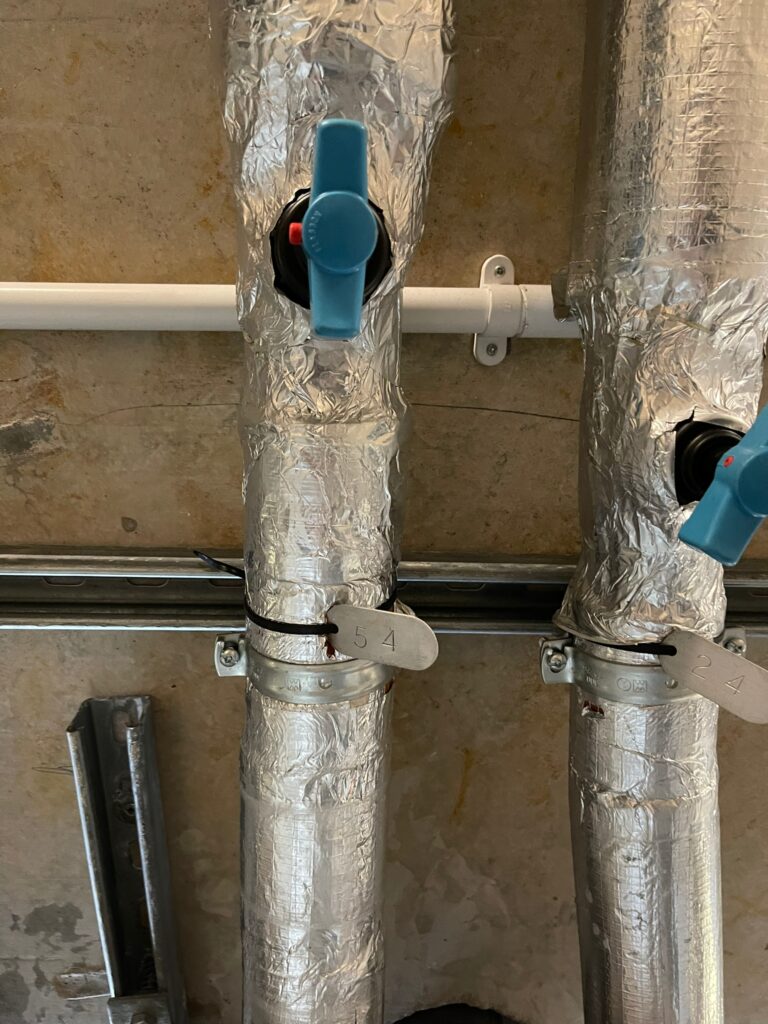Thawing Frozen Pipes: A Comprehensive Guide to Preventing Disaster
Frozen pipes can be a homeowner’s worst nightmare, especially in colder regions. When water inside your plumbing system freezes, it can lead to burst pipes, costly repairs, and water damage. In this article, we’ll explore the best plumber ways to thaw frozen pipes and prevent potential disasters.
Understanding the Problem

The Science Behind Frozen Pipes
Before Bristol plumbers delve into thawing techniques, it’s essential to understand why pipes freeze. When the temperature drops, the water inside your pipes can freeze, causing them to expand. This expansion puts immense pressure on the pipe walls, often leading to cracks or bursts.
Identifying Frozen Pipes
The first step in dealing with frozen pipes is identifying the affected areas. Common signs include reduced water flow or no water at all from faucets, unusual frost or condensation on pipes, and strange noises, like clanking or hissing.
Safe Thawing Methods
Gradual Thawing
One of the safest methods to thaw frozen pipes is gradual thawing. To do this, open the affected faucet slightly and apply gentle heat to the frozen section. This can be achieved using a hairdryer, heat lamp, or space heater. Be patient, as rushing the process may cause pipes to burst.
Hot Water
Using hot water can also effectively thaw frozen pipes. Wrap the affected pipe with a cloth soaked in hot water or use a hot water bottle. Alternatively, you can pour hot water directly over the frozen section. Be cautious not to use boiling water, as it may damage the pipes.
Electrical Pipe Thawing
For more severe cases, consider using an electrical pipe thawing machine, available for rent at most hardware stores. These devices deliver a controlled amount of heat to thaw the pipes safely.
Preventing Frozen Pipes
Insulation
Prevention is often the best solution. Insulating your pipes, especially in vulnerable areas like attics and crawlspaces, can help keep them from freezing. Use pipe insulation or heating tape to provide a protective barrier.
Letting Faucets Drip
During extremely cold nights, leaving your faucets dripping can prevent pipes from freezing. The continuous flow of water reduces the risk of ice formation within the pipes.
Seal Cracks and Gaps
Inspect your home for any cracks or gaps that allow cold air to seep in. Seal these openings to maintain a warmer environment for your plumbing.
Dealing with frozen pipes requires a proactive approach. Understanding the science behind freezing, identifying frozen pipes, and utilizing safe thawing methods are crucial steps in preventing disasters. Moreover, taking preventive measures like insulation, letting faucets drip, and sealing cracks can save you from the headache and expense of dealing with frozen pipes.
FAQs
1. Can I use a blowtorch to thaw frozen pipes?
It’s not recommended. The high heat from a blowtorch can damage pipes and pose a fire hazard. Stick to safer thawing methods.
2. How long does it take to thaw frozen pipes?
The time required depends on the method used and the extent of freezing. Gradual thawing may take several hours, while hot water methods are faster.
3. Are there any DIY insulation methods for pipes?
Yes, you can use materials like foam pipe insulation or heat tape for DIY pipe insulation. However, professional installation may provide better results.
4. Can frozen pipes burst even after thawing?
Yes, they can. The damage caused by freezing might weaken the pipe, leading to bursts later on. It’s essential to monitor your plumbing after thawing.
5. What’s the cost of repairing burst pipes?
Repair costs vary depending on the extent of the damage. Minor leaks may cost a few hundred dollars, while extensive damage can run into thousands. It’s best to address frozen pipes promptly to avoid costly repairs.
In this article, we’ve covered the science behind frozen pipes, safe thawing methods, and preventive measures. Remember that taking precautions and acting promptly can save you from the headaches and expenses associated with frozen pipes.
